Widex A S UXP UNIQUE-XP (model U-XP) Hearing aid User Manual
Widex A/S UNIQUE-XP (model U-XP) Hearing aid Users Manual
Users Manual
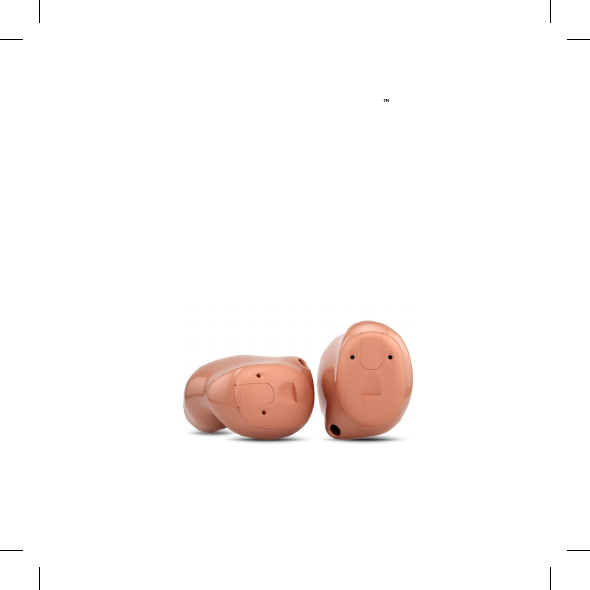
WIDEX UNIQUE
USER INSTRUCTIONS
THE WIDEX UNIQUE™ FAMILY
U-XP model
In-the-ear

Your Widex® hearing aid
To be filled out by the hearing care professional)
Vent: Short Full length None
Your hearing aid series:
2
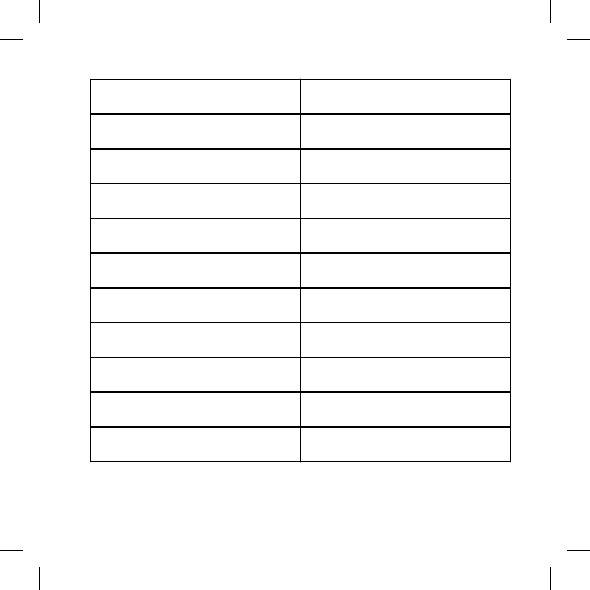
PROGRAM
Universal Audibility Extender
Quiet Audibility Extender
Transport Audibility Extender
Urban Audibility Extender
Party Audibility Extender
Music Audibility Extender
T Audibility Extender
M+T Audibility Extender
SPECIAL PROGRAMS
Zen Audibility Extender
3
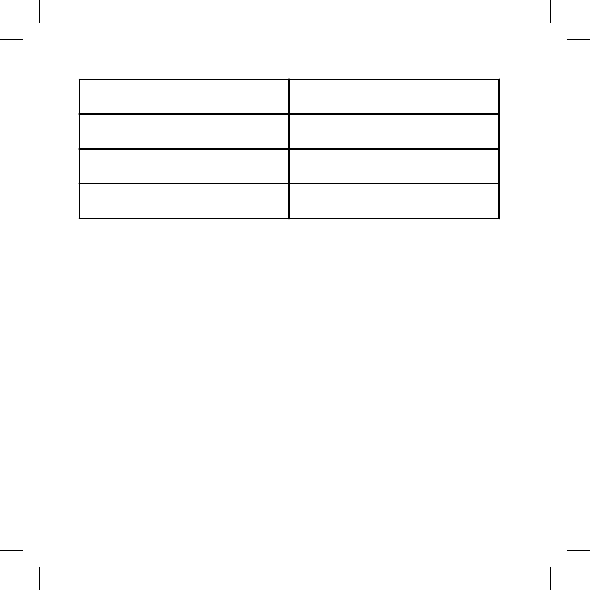
PROGRAM
Phone Audibility Extender
SMARTTOGGLE PROGRAMS
Zen+ Audibility Extender
NOTE
Read this booklet carefully before your start using your hearing aid.
4

CONTENTS
YOUR WIDEX HEARING AID....................................................................7
Welcome to Widex..........................................................................................7
Important safety information.........................................................................9
THE HEARING AID................................................................................. 12
Indications for use.......................................................................................... 12
Intended use....................................................................................................13
The battery......................................................................................................13
Sound signals..................................................................................................18
How to tell right from left.............................................................................20
Turning the hearing aid on and off...............................................................21
Putting on and removing your hearing aid................................................23
Sound adjustment.........................................................................................28
Programs........................................................................................................30
CLEANING.............................................................................................34
Tools................................................................................................................34
Cleaning the hearing aid...............................................................................34
5

The wax guard................................................................................................41
ACCESSORIES.......................................................................................47
TROUBLESHOOTING.............................................................................49
Troubleshooting............................................................................................ 49
REGULATORY INFORMATION...............................................................58
FCC and IC statements and EC directives...................................................58
SYMBOLS..............................................................................................64
6

Your Widex Hearing Aid
Welcome to Widex
Congratulations on your new hearing aid.
Use your hearing aid regularly, even if it takes some time getting
used to it. Infrequent users don’t usually get the full benefit of a
hearing aid.
NOTE
Your hearing aid and its accessories may not look exactly as illustra-
ted in this booklet. We also reserve the right to make any changes
we consider necessary.
7
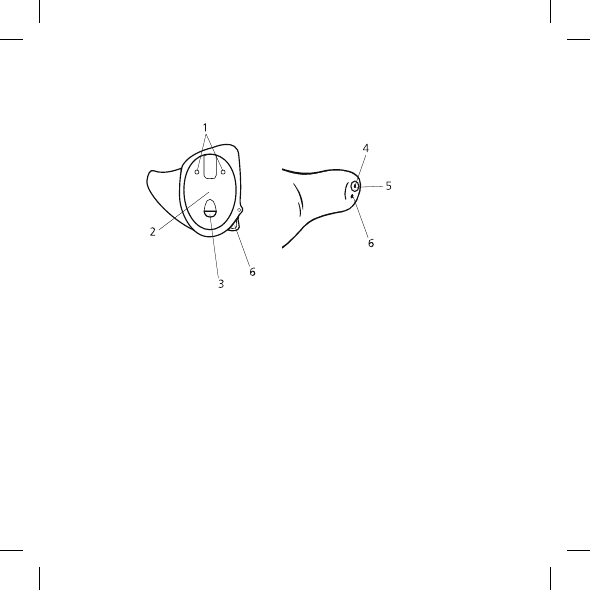
Your hearing aid at a glance
1. Microphone openings
2. Battery compartment lid (on/off function)
3. Nail grip
4. Sound outlet
5. Widex wax guard
6. Vent (optional)
8
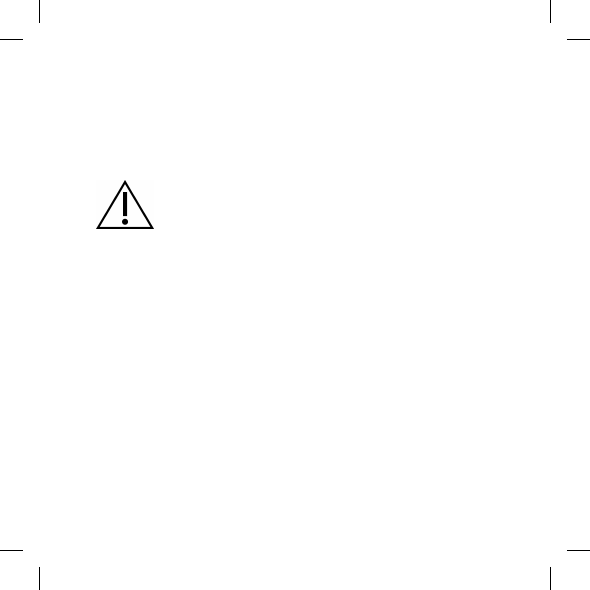
Important safety information
Read these pages carefully before you begin using your hearing
aid.
●Take your hearing aids out when you are not using them. This
will help to ventilate the ear canal and prevent ear infections.
●Contact your doctor or hearing care professional immediately
if you suspect you may have an ear infection.
●Do not expose your hearing aids to extreme temperatures or
high humidity, and dry them quickly if they get wet, or if you
perspire heavily.
●Remove your hearing aids before showering, swimming or us-
ing a hair dryer.
9

●Do not wear your hearing aids when applying perfume, spray,
gels, lotion or cream.
●Do not dry your hearing aid in a microwave oven - this will
ruin it.
●Never use other people’s hearing aids and never allow others
to use yours, as this could damage your hearing.
●Never use your hearing aids in environments where there may
be explosive gases, such as in mines, etc.
●Keep hearing aids, their parts, accessories and batteries away
from children.
●Never try to open or repair the hearing aid yourself. Contact
your hearing care professional if you need to have your hear-
ing aid repaired.
●Your hearing aid is very powerful and it can play sounds that
exceed a level of 132 dB. There may therefore be a risk of
damaging your remaining hearing.
10

Your hearing instruments should be stored and transported with-
in the temperature and humidity ranges of -20°C to +40°C (-4°F
to 104°F) and 10%-95% rH.
Storage and transportation up to 60°C (140°F) with 10%-95% rH
can be accepted in shorter periods (duration of max. of 2 weeks).
Your hearing instruments are designed to operate from 0°C
(32°F) to 50°C (122°F).
11

The hearing aid
Indications for use
The hearing aids are indicated for individuals older than 36
months with a range of hearing loss from minimal (10 dB HL) to
severe (90 dB HL) and all hearing loss configurations.
They are to be programmed by licensed hearing care professio-
nals (audiologists, hearing aid specialists, otolaryngologists) who
are trained in hearing (re)habilitation.
12

Intended use
The hearing aids are intended as air conduction amplification de-
vices to be used in everyday listening environments. The hearing
aids may be equipped with the Zen program intended to provide
a relaxing sound background (i.e. music/noise source) for adults
who desire to listen to such a background in quiet.
The battery
Use a type 312 zinc-air battery for your hearing aid.
Always use a fresh, new battery that is precisely the kind recom-
mended by your hearing care professional.
13

NOTE
Check that the battery is completely clean and free of any residue
before inserting it in the hearing aid. Otherwise your hearing aid
may not function as expected.
Dispose of used batteries as indicated on the packaging and take
note of the expiry date.
●Never attempt to recharge your hearing aid batteries, as they
could explode.
●Never leave a flat battery in the hearing aids while storing
them. It could leak and ruin your hearing aid.
14

Low battery indication
When the battery is flat, a sound signal will play. If the battery
drains suddenly there may however be no warning. We recom-
mend carrying a spare battery with you wherever you go.
Changing the battery
To change the battery, do as follows:
Use the nail grip to gently swing
the battery door open and re-
move the old battery.
15
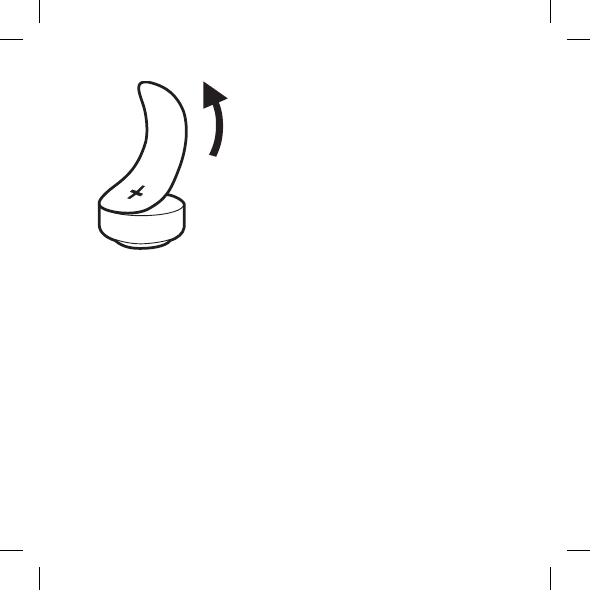
Take the adhesive tab off the
new battery and make sure
there is no sticky substance left
on it. Let it ‘breathe’ for 60 sec-
onds.
16
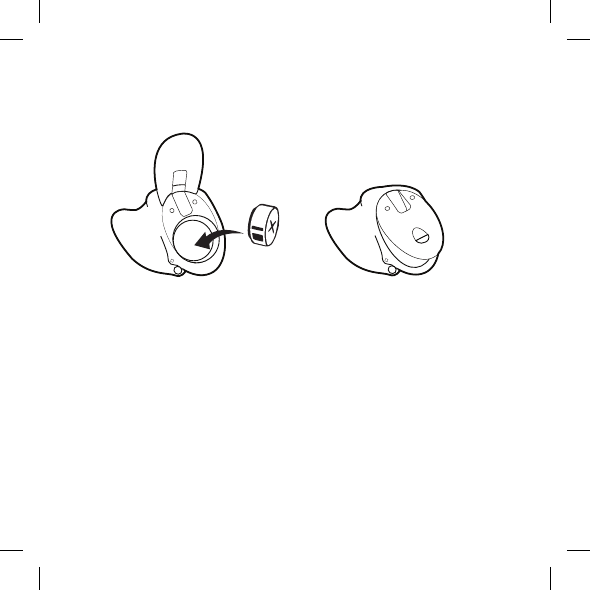
Now place the new battery in the drawer as shown.
Close the drawer. If it doesn't close easily, the battery is not
placed correctly.
If you are not using the hearing aid for a few days, remove the
battery.
17

NOTE:
Avoid dropping your hearing aid - hold the hearing aid above a
soft surface while changing the battery.
Sound signals
Your hearing aid plays sounds to inform you that certain features
have been activated or that you have changed programs. These
sounds may be spoken messages or tones, depending on your
needs and preferences.
18
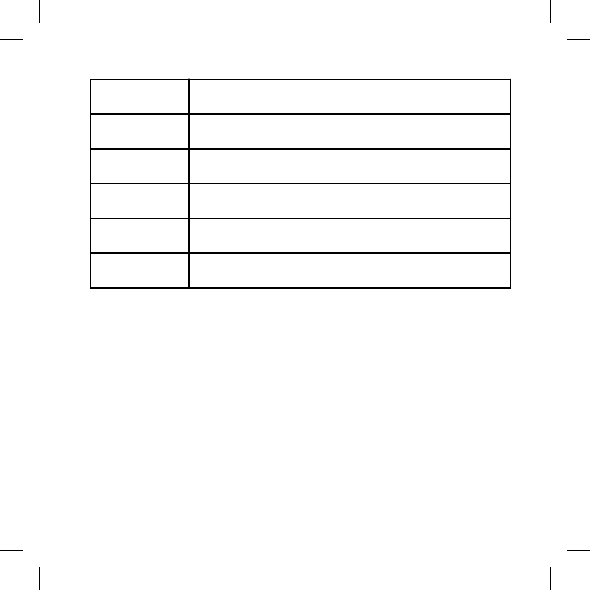
Program 1 Message/one short beep
Program 2 Message/two short beeps
Program 3 Message or three short beeps
Program 4 Message/one short and one long beep
Program 5 Message/one long beep and two short beeps
Zen+ Message/tone
Ask your hearing care professional to turn these sounds signals
off if you don't need them.
Lost partner
(Only available in wireless 440-series)
19

Your hearing care professional can turn on a feature in your hear-
ing aid that warns you whenever it loses contact with the hearing
aid in the opposite ear. You will hear a spoken message in your
ear.
How to tell right from left
The hearing aid for your right ear has a red mark. The hearing aid
for your left ear has a blue mark.
20
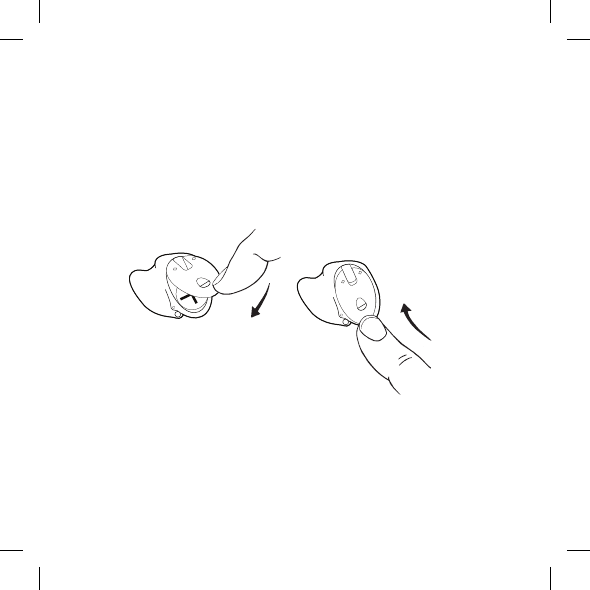
Turning the hearing aid on and off
To turn the hearing aid on, close the battery lid and push it up-
wards. The hearing aid will play a sound signal to indicate that it
is on, unless your hearing care professional has deactivated this
function.
21
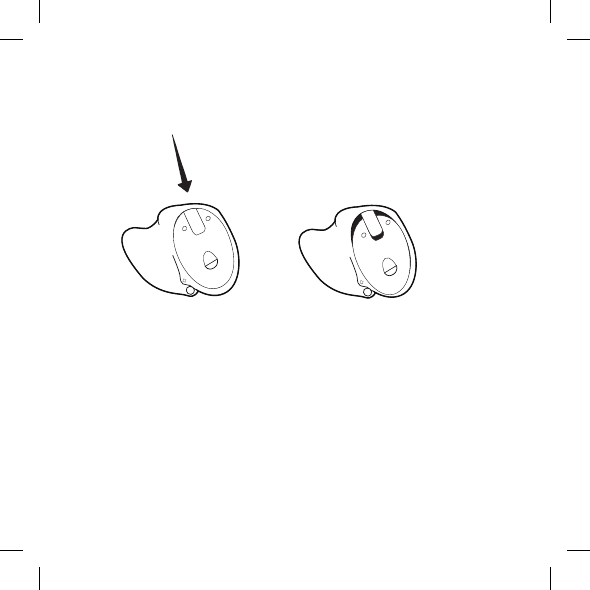
To turn off the hearing aid, push the battery lid downwards.
NOTE
You can also cup the hearing aid in your hand to verify that it is
turned on. If it's on, it will whistle. Don't forget to turn off the hear-
ing aid when it is not in use.
22
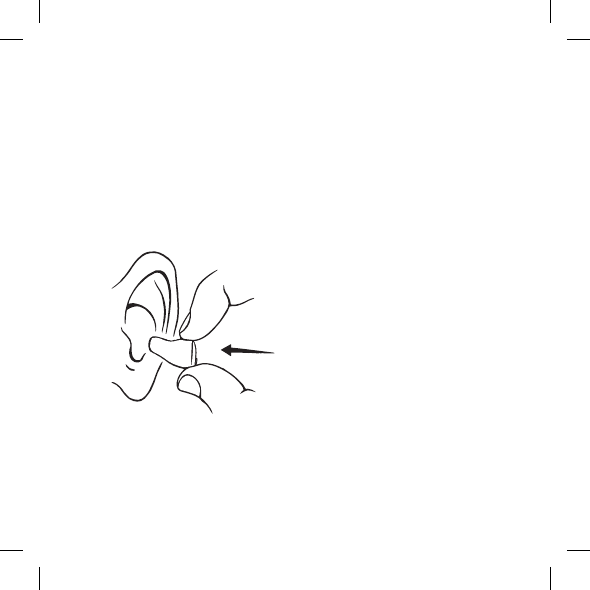
Putting on and removing your hearing aid
To put on your hearing aid:
Close the battery cover completely.
Hold the hearing aid with your thumb and forefinger and insert it
slowly into your ear until you feel resistance.
23
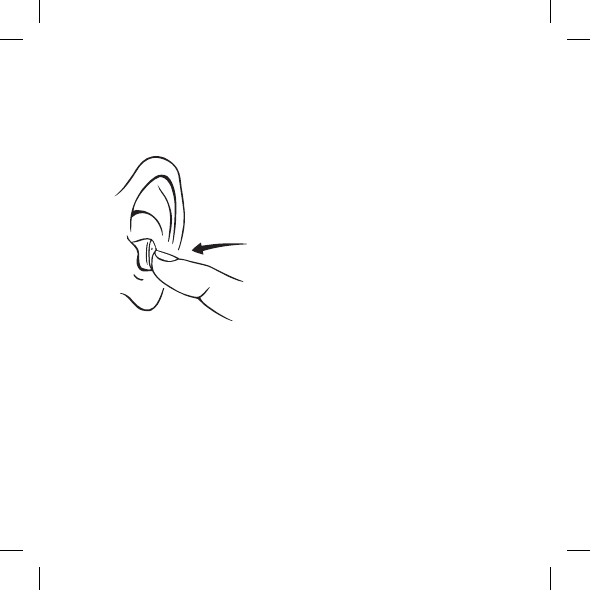
Then use the tip of your forefinger to gently push the hearing aid
into your ear until it feels comfortable.
24
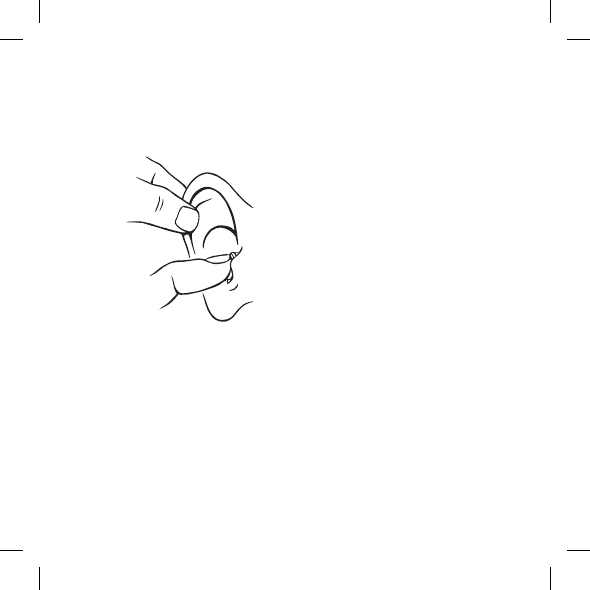
Pulling the outer ear upwards and backwards while you insert the
hearing aid can be helpful.
25

NOTE
If the hearing aid doesn't feel comfortable, or if it doesn't fit proper-
ly, causing irritation, redness or the like, contact your hearing care
professional.
26
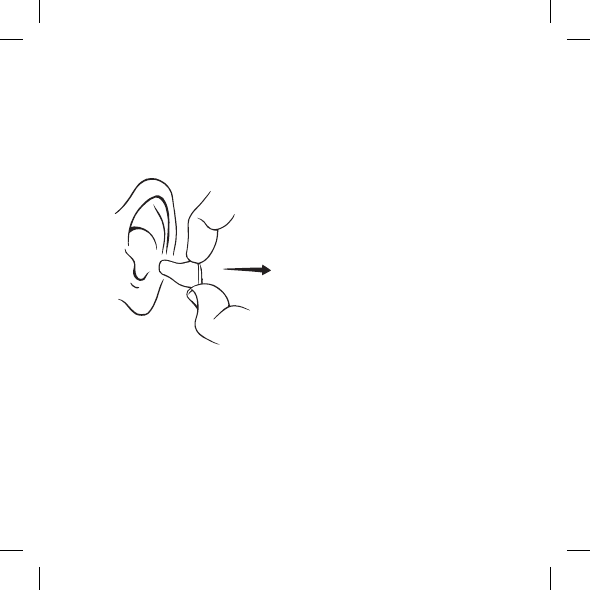
Removing the hearing aid
Hold the hearing aid with your thumb and forefinger and pull
carefully.
27

NOTE
If you find it difficult to take out the hearing aid, move it carefully
from side to side.
Sound adjustment
Your hearing aid adjusts the sound automatically according to
your sound environment.
If you have a remote control, you can also adjust the sound man-
ually to achieve more comfort or more audibility, depending on
your needs and preferences. For more information on how this
works, consult your hearing care professional.
Depending on the hearing aid settings and features, any sound
adjustment you make will affect both hearing aids.
28

Each time you operate the volume control, you will hear a beep-
tone unless your hearing care professional has deactivated this
function. When you reach the maximum or minimum setting, you
will hear a steady tone.
To mute your hearing aid do as follows:
●Keep pressing the lower part of the volume key on the remote
control until you can hear the steady sound
To turn the sound on again:
●Press the upper part of the volume key or
●Change program
Any adjustment of the volume will be cancelled when you turn off
your hearing aid or if you change program.
29
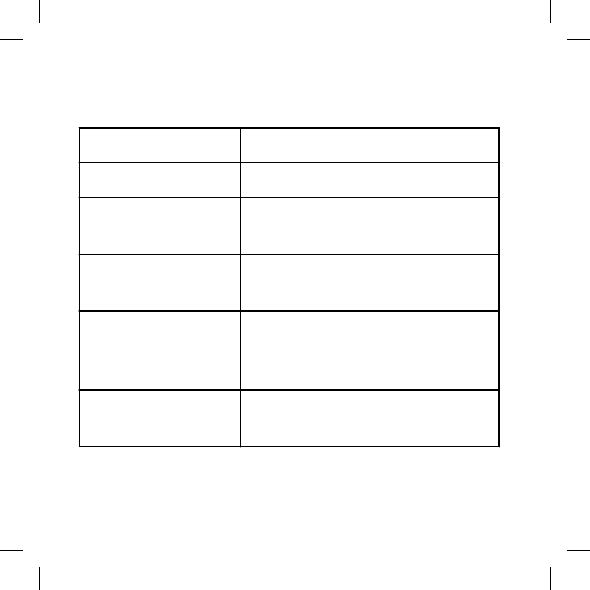
Programs
Program Use
Universal For everyday use
Quiet Special program for listening in quiet
environments
Transport For listening in situations with noise
from cars, trains, etc.
Urban For listening in situations with chang-
ing sound levels (in supermarkets,
noisy workplaces or similar)
Party For listening in situations with many
people talking at the same time
30

Program Use
Music For listening to music
T With this program you listen through
the hearing aid's telecoil, which allows
you to listen directly to the sound
without background noise (requires a
teleloop system)
M+T This program is a combination of the
hearing aid's microphone and the tel-
ecoil. You listen to the sound source,
but can also hear other sounds
SPECIAL PROGRAMS
Zen Plays tones or noise for tinnitus relief
31
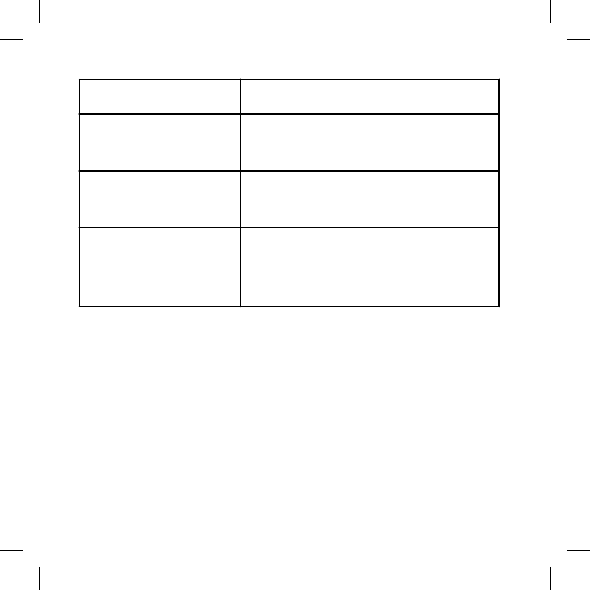
Program Use
Phone This program is designed for listening
to phone conversations
SMARTTOGGLE PRO-
GRAMS
Zen+ This program is similar to Zen but al-
lows you to listen to different types of
tones or noise
Depending on your hearing loss, your hearing care professional
can activate the Audibility Extender feature. Ask your hearing
care professional if you could benefit from this.
If your needs and preferences change over time, your hearing
care professional can easily change your program selection
32

Changing programs
To change programs, simply push the program key on your re-
mote control.
Zen+
To access this program, press and hold the program key for more
than one second. A quicker press then allows you to cycle
through the available Zen styles. To exit the program, press and
hold down the program key for more than one second.
33
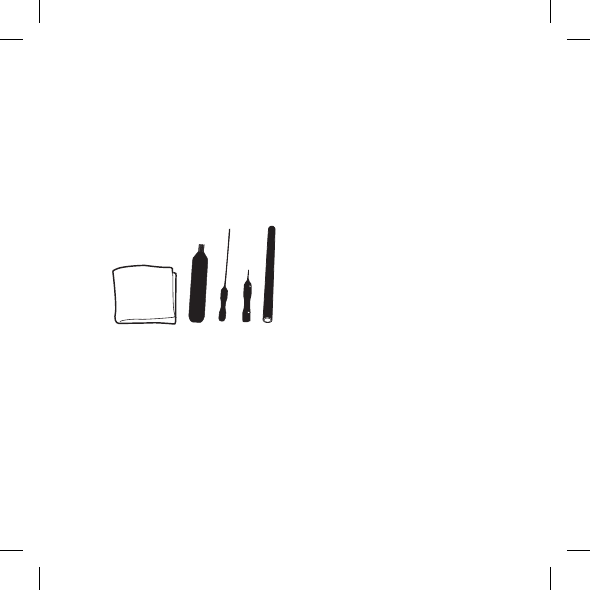
Cleaning
Tools
You will receive the following cleaning tools with your hearing
aid. Use them as indicated in the Cleaning section.
3.2.1. 4. 5.
1. Cloth
2. Brush
3. Long wax removing tool
4. Short wax removing tool
5. Battery magnet
Cleaning the hearing aid
Cleaning your hearing aid every day will make it more efficient
and more comfortable to wear.
34
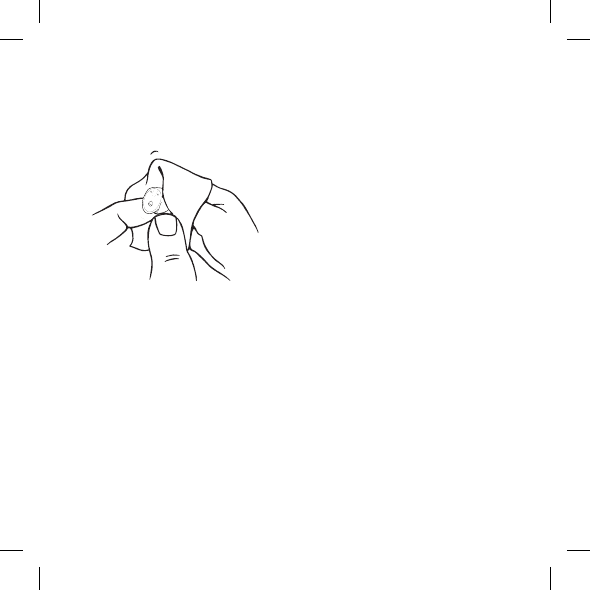
The hearing aid
Just wipe it with the a soft cloth
(for example the cloth you re-
ceived from your hearing care
professional).
The sound outlet
35
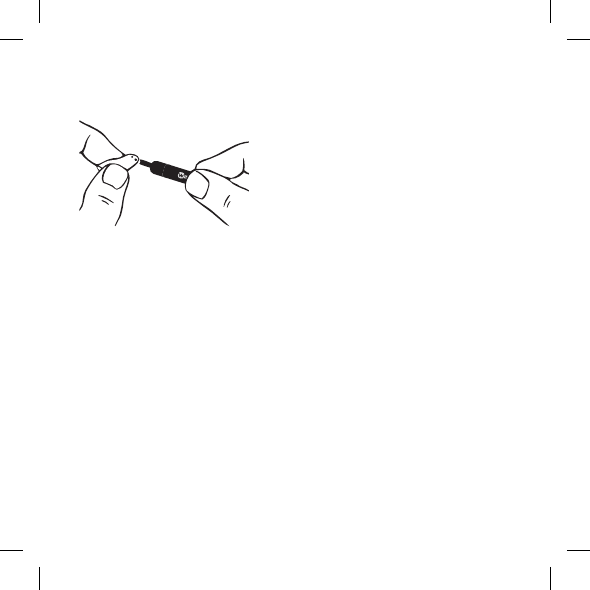
Remove any visible earwax from
around the sound outlet with
the small brush or cloth. Never
try to clean the wax guard.
NOTE
If you can't clean the sound outlet, contact your hearing care pro-
fessional. Never insert anything into the sound outlet as this can ru-
in your hearing aid.
The microphone openings
Clean the microphone openings in the hearing aid front as fol-
lows:
36
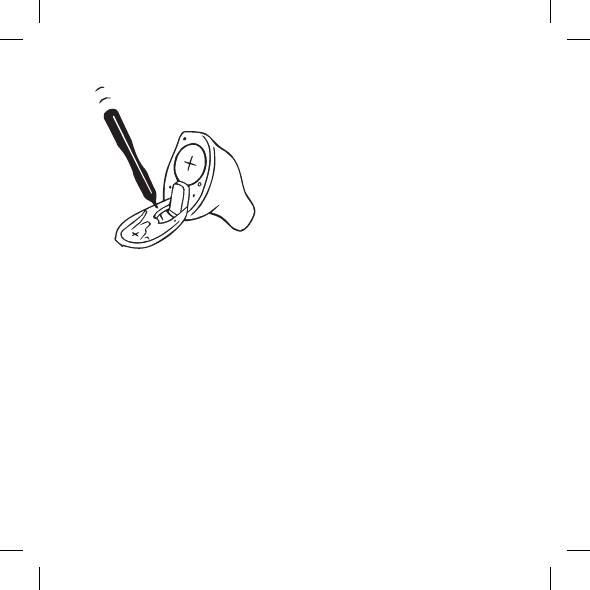
Open the battery lid and turn the
hearing aid so the lid is facing
downwards (see illustration).
Guide the short wax removing
tool (no. 4 ) through the micro-
phone openings on the lid from
the inside (see illustration).
NOTE
If you suspect that earwax or dirt has got into the microphone in-
side the hearing aid, contact your hearing care professional. Do not
insert anything into the microphone.
The vent
37
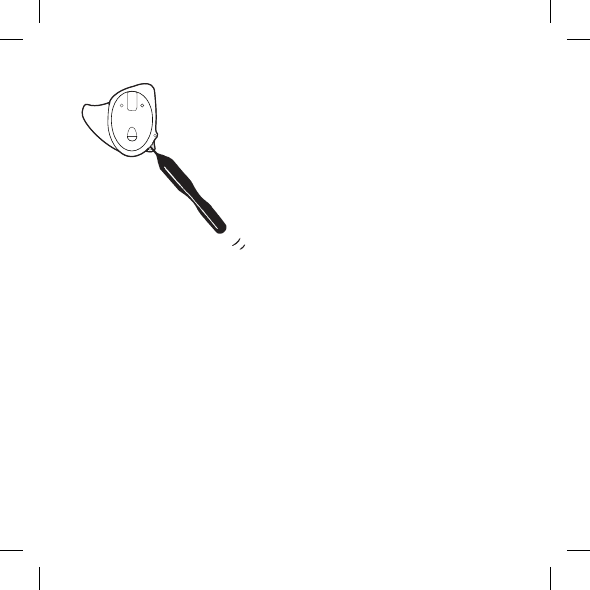
Clean the vent every day by
passing the long wax removing
tool (no. 4) all the way through
the vent.
38

Leave the hearing aid open to
ventilate it.
NOTE
It is important for the performance of your hearing aid that you
keep the vent clean and free of earwax, dirt and the like. Clean it
every day after use and consult your hearing care professional if the
vent is blocked.
39

Dry your hearing aid quickly if it gets wet, or if you perspire heav-
ily. Some people use a special dehumidifier like Widex Dry-Go to
help keep their hearing aids dry and clean. Ask your hearing care
professional if this is right for you.
●Do not use any kind of liquid or disinfectant to clean your
hearing aid.
●Clean and inspect your hearing aid every day after use to
check that it is not broken. If the hearing aid breaks while you
are wearing it, leaving small fragments in your ear canal, con-
tact your doctor. Never try to take out the fragments yourself.
40
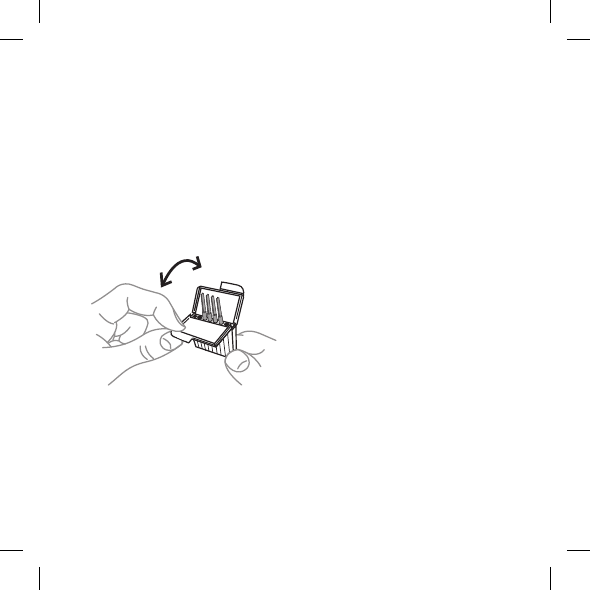
The wax guard
The Widex wax guard helps to protect the hearing aid against
earwax. Always use Widex wax guards with your hearing aid.
Otherwise the guarantee for your hearing aid will be void.
Changing the wax guard
Open the wax guard case as il-
lustrated.
41
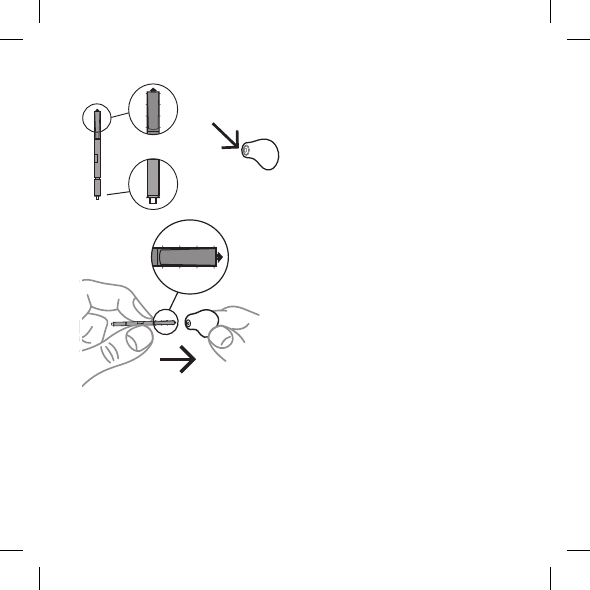
1.
2.
The wax guard consists of the
following parts:
1. Removal hook
2. New wax guard
Insert the removal hook into the
used wax guard.
42
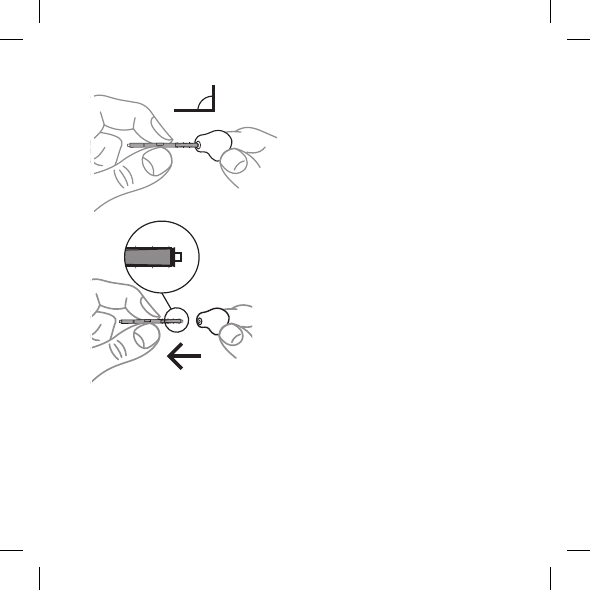
Keep the holder at a right angle.
Pull the used wax guard straight
out.
43
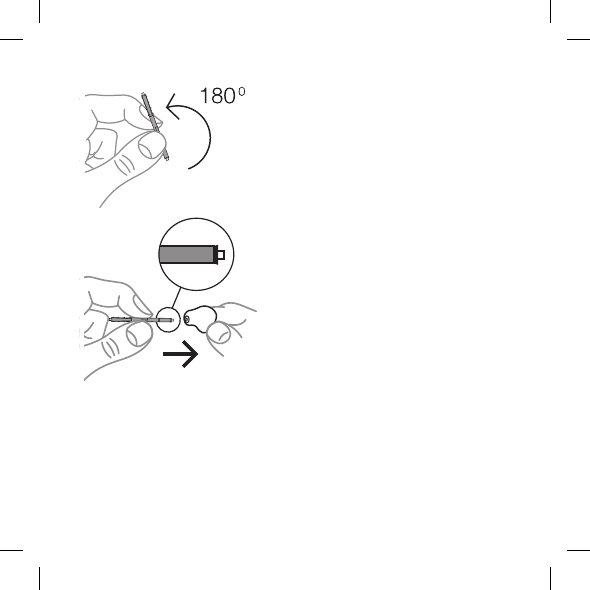
Insert the new wax guard into
the opening of the sound outlet
and press it gently.
44
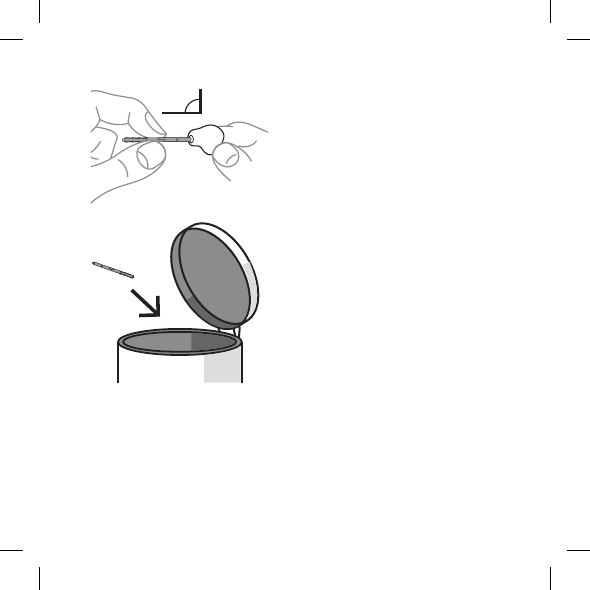
Pull the holder straight out.
Ask your hearing care professional about how often you should
change the wax guard.
45
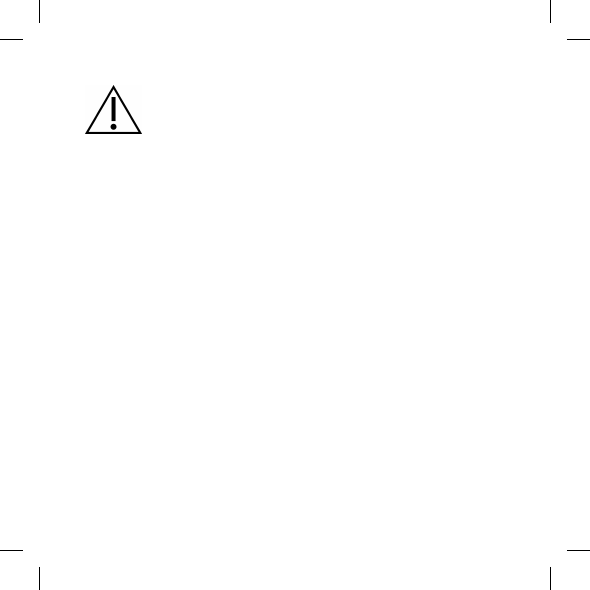
●The wax guard is for one-time use only and is not intended to
be cleaned.
●If the wax guard fits loosely, discard it and use a new one.
●If the wax guard falls off inside your ear, contact your doctor
or hearing care professional to have it removed. Do NOT at-
tempt to remove the wax guard yourself.
46
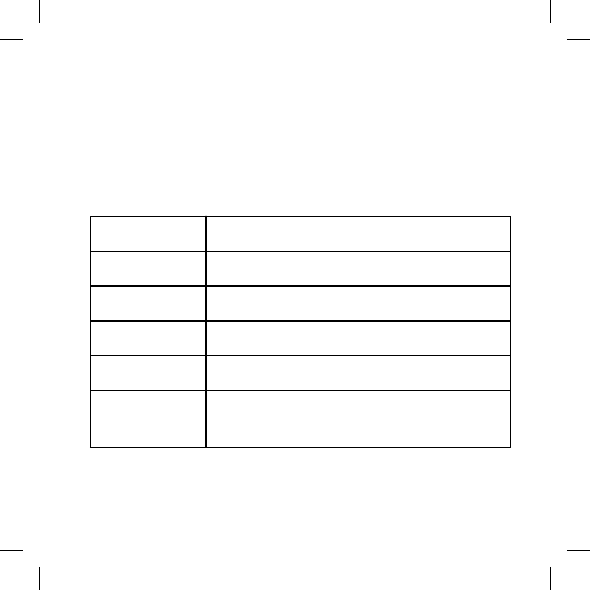
Accessories
You can use a variety of accessories with your hearing aid. To see
whether you could benefit from using these accessories, ask your
hearing care professional.
Name Use
RC-DEX remote control
TV-DEX for listening to TV and audio
PHONE-DEX* for easy landline use
FM+DEX for streaming audio and FM signals
T-DEX for connecting hearing aids to mobile phones
via a telecoil
47
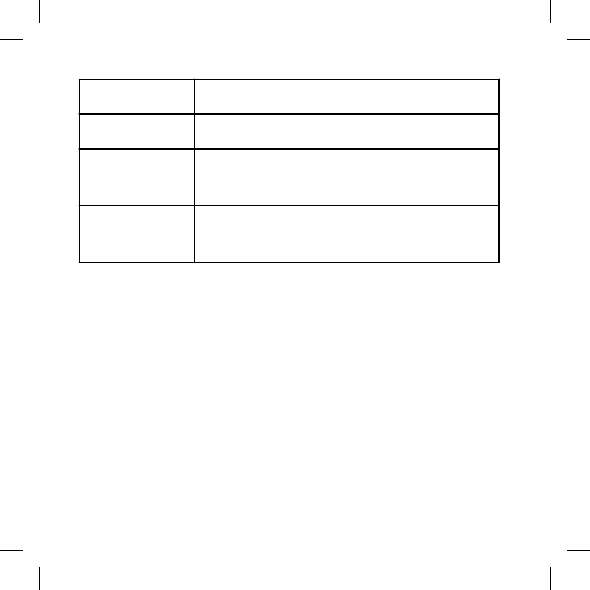
Name Use
UNI-DEX for connecting hearing aids to mobile phones
CALL-DEX for easy wireless connection to mobile
phones
COM-DEX for wireless connection to mobile phones and
other devices via bluetooth
Accessories
*Available in some countries only.
48
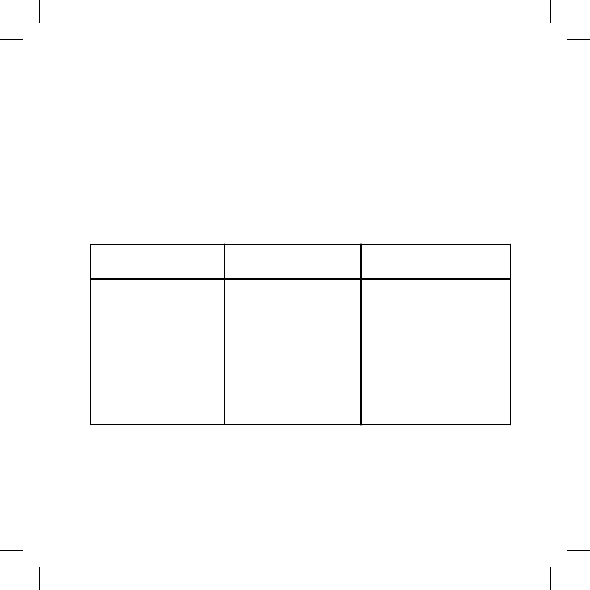
Troubleshooting
Troubleshooting
These pages contain advice on what to do if your hearing aid
stops working or if it doesn't work as expected. If the problem
persists, contact your hearing care professional.
Problem Possible cause Solution
The hearing aid is
completely silent
It is not turned on Make sure the bat-
tery is placed cor-
rectly and the bat-
tery compartment
cover is closed cor-
rectly.
49

Problem Possible cause Solution
The battery does
not work
Insert a new battery
in the hearing aid
The sound outlet is
blocked
See the cleaning sec-
tion
The microphone
opening is blocked
See the cleaning sec-
tion
The hearing aid
volume is not
powerful enough
The sound outlet is
blocked
See the cleaning sec-
tion
Your ear is blocked
by earwax
Contact your doctor
50

Problem Possible cause Solution
Your hearing may
have changed
Contact your hearing
care professional/
doctor
The hearing aid
whistles continu-
ously
Your ear is blocked
by earwax
Contact your doctor
It is not correctly
placed in your ear
canal
Take it out and rein-
sert it
It fits loosely in
your ear canal
Contact your hearing
care professional
51
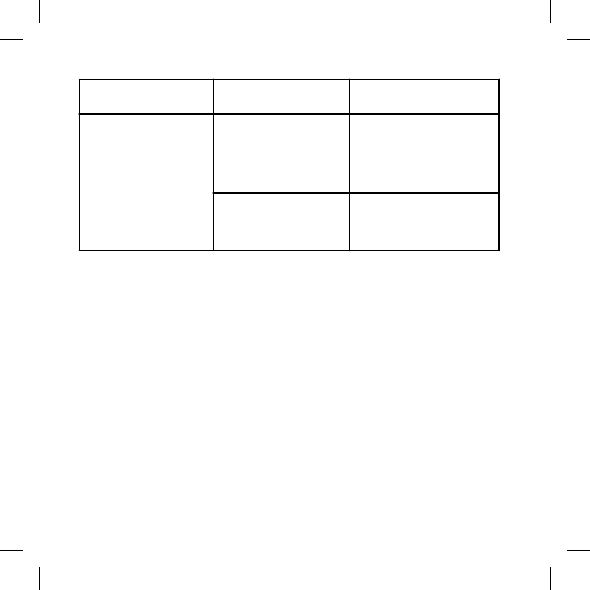
Problem Possible cause Solution
The hearing aid is
uncomfortable to
wear
It is not correctly
placed in your ear
canal.
Consult your hearing
care professional
It does not fit your
ear properly
Contact your hearing
care professional
52
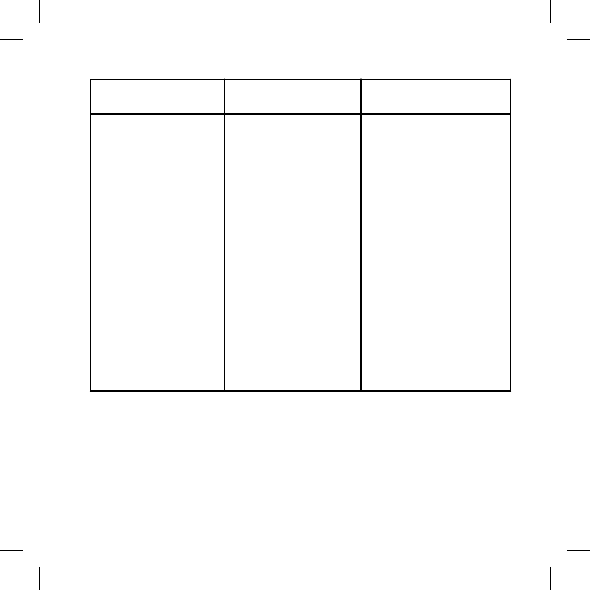
Problem Possible cause Solution
Your outer ear or
ear canal is sore
It is important that
first-time users only
wear the hearing aid
for short periods of
time at the begin-
ning. Take 2-3 weeks
to gradually get used
to the hearing aid. If
the soreness contin-
ues, contact your
hearing care profes-
sional
53
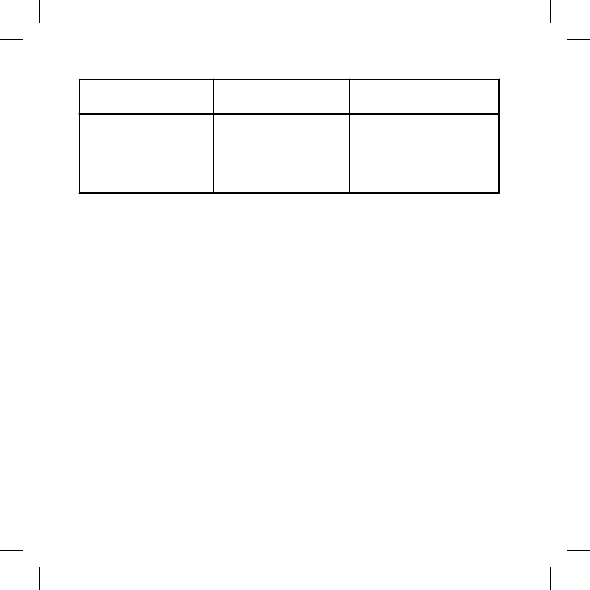
Problem Possible cause Solution
Your hearing aids
are not working in
synchrony
The connection be-
tween the hearing
aids is lost
Turn them off and on
again
54
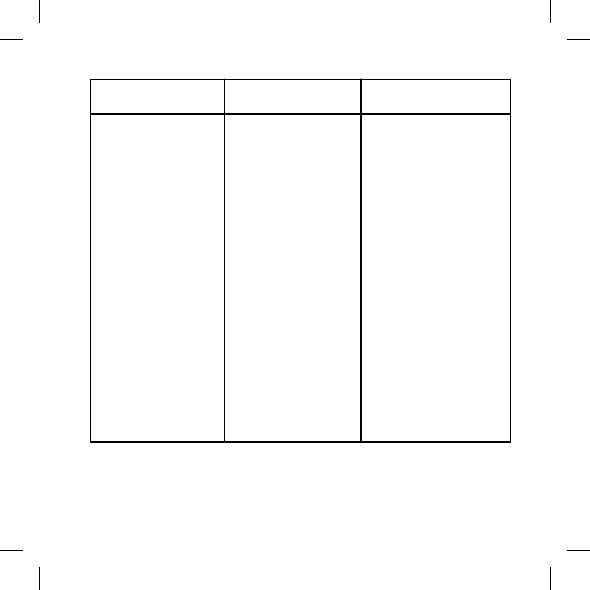
Problem Possible cause Solution
The hearing aids
do not respond
with a correspond-
ing change in vol-
ume or program to
the device
a.
The device is used
beyond the trans-
mission range
b.
Strong electro-
magnetic interfer-
ence in the vicinity
c.
The device and the
hearing aids are
not matched
a.
Move the device
closer to the hearing
aids
b.
Move away from
known source of EM
interference
c.
55
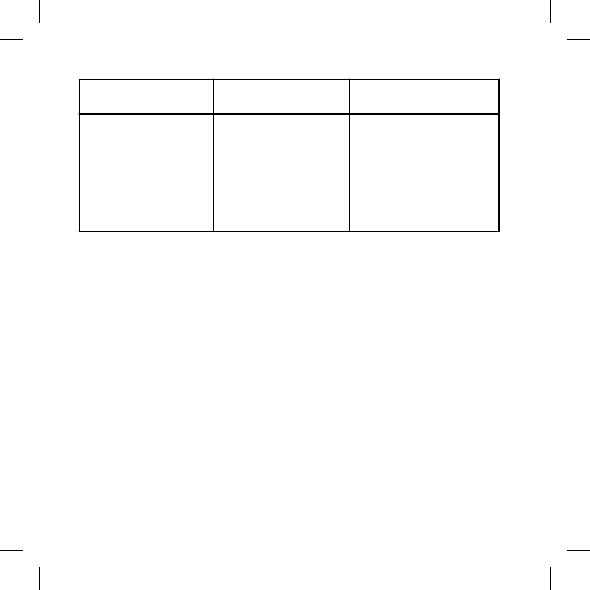
Problem Possible cause Solution
Check with your
hearing care profes-
sional to make sure
device is matched
with the hearing aids
56
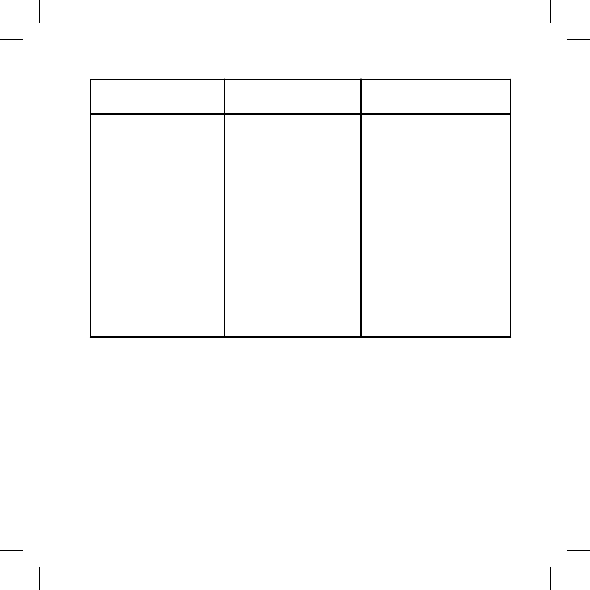
Problem Possible cause Solution
You hear “inter-
rupted” speech
(on and off) from
the hearing aids or
no speech (muted)
from the transmit-
ting hearing aid.
a.
The battery in one
of the hearing aids
has expired
b.
Strong electro-
magnetic interfer-
ence in the vicinity
a.
Replace battery in
one or both hearing
aids
b.
Move away from
known sources of in-
terference
57

Regulatory information
FCC and IC statements and EC directives
FCC and IC statements
FCC ID: TTY-UXP
IC: 5676B-UXP
Federal Communications Commission Statement
This device complies with part 15 of the FCC Rules. Operation is
subject to the following two conditions:
(1) This device may not cause harmful interference, and
(2) this device must accept any interference received, including
interference that may cause undesired operation.
NOTE:
58

This equipment has been tested and found to comply with the
limits for a Class B digital device, pursuant to part 15 of the FCC
Rules. These limits are designed to provide reasonable protection
against harmful interference in a residential installation. This
equipment generates, uses and can radiate radio frequency ener-
gy and, if not installed and used in accordance with the instruc-
tions, may cause harmful interference to radio communications.
However, there is no guarantee that interference will not occur in
a particular installation. If this equipment does cause harmful in-
terference to radio or television reception, which can be deter-
mined by turning the equipment off and on, the user is encour-
aged to try to correct the interference by one or more of the fol-
lowing measures:
— Reorient or relocate the receiving antenna.
— Increase the separation between the equipment and receiver.
59

— Connect the equipment into an outlet on a circuit different
from that to which the receiver is connected.
— Consult the dealer or an experienced radio/TV technician for
help.
NOTE:
This equipment complies with FCC radiation exposure limits set
forth for an uncontrolled environment. This transmitter must not
be co-located or operating in conjunction with any other antenna
or transmitter.
Changes or modifications to the equipment not expressly ap-
proved by Widex could void the user’s authority to operate the
equipment.
Industry Canada Statement / Déclaration d’industrie Canada
60

Under Industry Canada regulations, this radio transmitter may on-
ly operate using an antenna of a type and maximum (or lesser)
gain approved for the transmitter by Industry Canada.
To reduce potential radio interference to other users, the antenna
type and its gain should be so chosen that the equivalent isotrop-
ically radiated power (e.i.r.p.) is not more than that necessary for
successful communication.
This device complies with Industry Canada licence-exempt RSS
standard(s). Operation is subject to the following two conditions:
(1) this device may not cause interference, and
(2) this device must accept any interference, including interfer-
ence that may cause undesired operation of the device.
61

Conformément à la réglementation d’Industrie Canada, le présent
émetteur radio peut fonctionner avec une antenne d’un type et
d’un gain maximal (ou inférieur) approuvé pour l’émetteur par In-
dustrie Canada.
Dans le but de réduire les risques de brouillage radioélectrique à
l’intention des autres utilisateurs, il faut choisir le type d’antenne
et son gain de sorte que la puissance isotrope rayonnée équiva-
lente (p.i.r.e.) ne dépasse pas l’intensité nécessaire à l’établisse-
ment d’une communication satisfaisante.
Le présent appareil est conforme aux CNR d’Industrie Canada ap-
plicables aux appareils radio exempts de licence. L’exploitation
est autorisée aux deux conditions suivantes :
(1) l’appareil ne doit pas produire de brouillage, et
62

(2) l’utilisateur de l’appareil doit accepter tout brouillage radioé-
lectrique subi, même si le brouillage est susceptible d’en compro-
mettre le fonctionnement.
Directive 1999/5/EC
Hereby, Widex A/S declares that this U-XP is in compliance with
the essential requirements and other relevant provisions of Direc-
tive 1999/5/EC.
A copy of the Declaration of Conformity according to 1999/5/EC
can be found at:
http://widex.com/doc
N26346
63

Symbols
Symbols
Symbols commonly used by Widex A/S in medical device label-
ling (labels/IFU/etc.)
Symbol Title/Description
Manufacturer
The product is produced by the manufacturer whose
name and address are stated next to the symbol. If
appropriate, the date of manufacture may also be
stated.
64
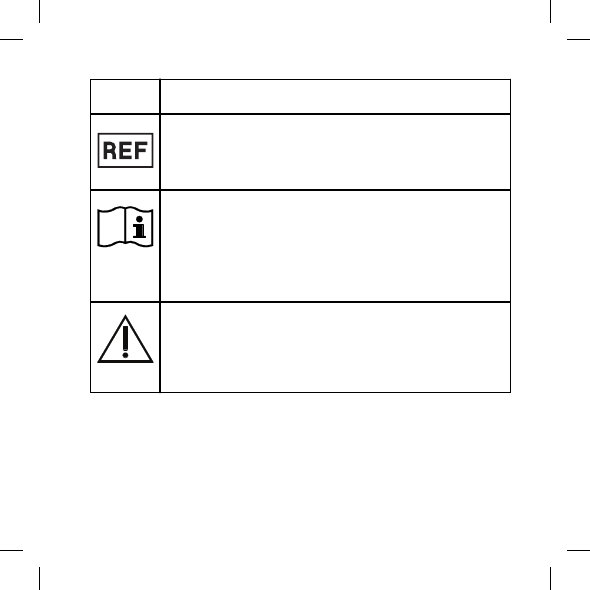
Symbol Title/Description
Catalogue number
The product’s catalogue (item) number.
Consult instructions for use
The user instructions contain important cautionary
information (warnings/precautions) and must be
read before using the product.
Warning
Text marked with a warning symbol must be read
before using the product.
65
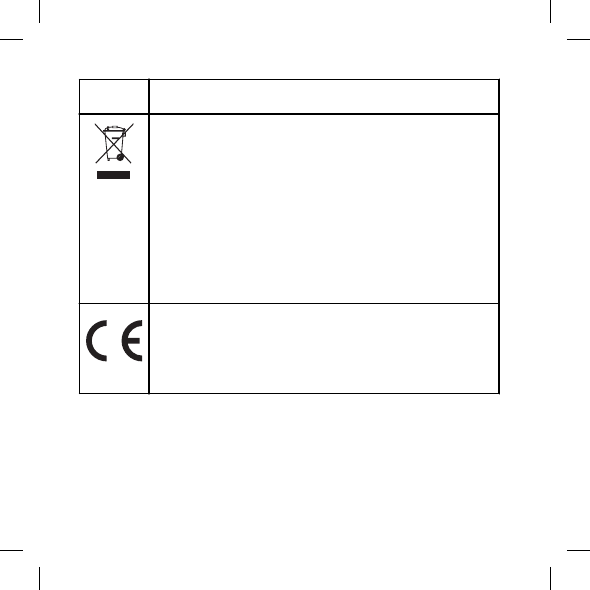
Symbol Title/Description
WEEE mark
“Not for general waste”
When a product is to be discarded, it must be sent to
a designated collection point for recycling and re-
covering to prevent to prevent the risk of harm to
the environment or human health as a result of the
presence of hazardous substances.
CE mark
The product is in conformity with the requirements
set out in European CE marking directives.
66
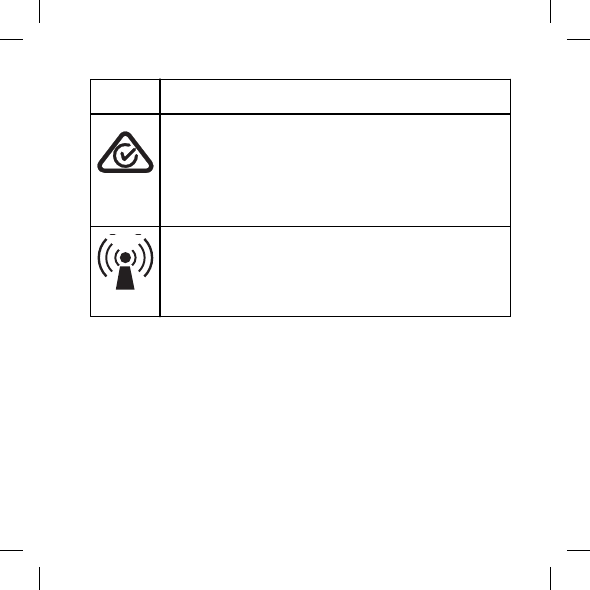
Symbol Title/Description
RCM mark
The product complies with electrical safety, EMC and
radio spectrum regulatory requirements for products
supplied to the Australian or New Zealand market.
Interference
Electromagnetic interference may occur in the vicini-
ty of the product.
67
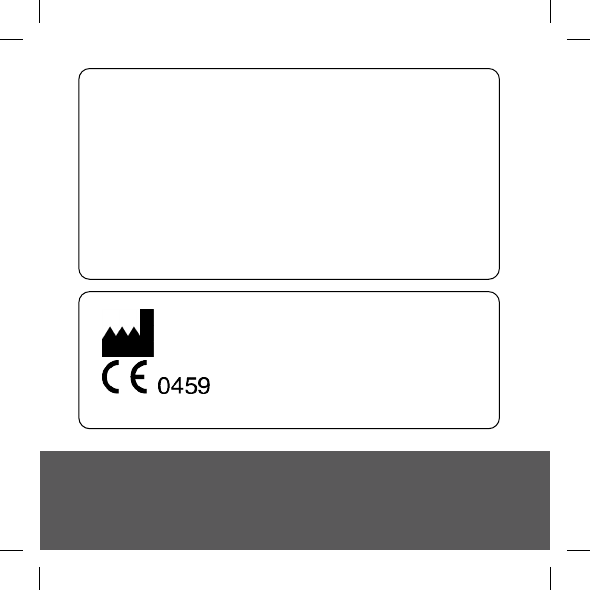
WIDEX A/S Nymoellevej 6, DK-3540 Lynge, Denmark
www.widex.com
Manual no.:
Issue:
2015-08-17 95140319001